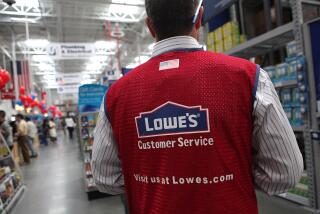Managing Work Force Diversity
- Share via
Xerox Corp.’s program for managing diversity is one company’s response to dramatic changes taking place in the U.S. work force.
A report by the Hudson Institute, “Workforce 2000: Work and Workers for the 21st Century,” predicts:
* Only 15% of the net new entrants into the labor force over the next 10 years will be native-born white males, compared to 47% today.
* Almost two-thirds of those entering the work force between now and the year 2000 will be women, and there will be more women in higher paying professional and technical jobs.
* Non-whites will make up 29% of the new workers, double the present number. Immigrants will represent the largest single increase.
By comparison, the Department of Labor’s January, 1990, statistics show that, of 117.9 million workers, 10.1% were black and 7.5% were Hispanic; 45.4% were women.
Felice Schwartz, in her 1989 Harvard Business Review article that explored what came to be known as the “mommy track,” wrote: “Women in the corporation are about to move from a buyers’ to a sellers’ market. The sudden, startling recognition that 80% of new entrants in the work force over the next decade will be women, minorities and immigrants has stimulated a mushrooming incentive to ‘value diversity.’ ”
In an article in that journal last year, R. Roosevelt Thomas Jr., executive director of the American Institute for Managing Diversity at Atlanta’s Morehouse College, concluded:
“The so-called mainstream (work force) is now almost as diverse as the society at large.”
But, he pointed out, although “women and minorities no longer need a boarding pass, they need an upgrade.”
How is Xerox doing?
According to its own data, the corporation’s 55,700 U.S. employees include 32% women and 25% minorities. Of the latter, 14.1% are black, 6.4% are Latino and 4.6% are Asian.
In management, Xerox lists 23% women and 20% minorities. Top level management is 83% white, 91.5% male and 17% minority.
“Xerox has to be among the leaders” in affirmative action, says Thomas, whose book, “Beyond Race and Gender: Unleashing the Power of Your Total Workforce,” will be published in the spring. “They’ve done a commendable job. Xerox has an excellent track record.”
The company’s program is being tested before Xerox managers in El Segundo and Sunnyvale this week and will be presented to Rochester, N.Y., management personnel during the next few weeks.
Besides Xerox’s “Managing Diversity” program, other major companies he has cited for their aggressive response to diversity are Avon, which has a multicultural participation council on which its CEO sits; Corning, which has instituted mandatory awareness training; Digital, with its “valuing differences” program, and Procter & Gamble, with its corporate diversity strategy task force.
More to Read
Inside the business of entertainment
The Wide Shot brings you news, analysis and insights on everything from streaming wars to production — and what it all means for the future.
You may occasionally receive promotional content from the Los Angeles Times.










